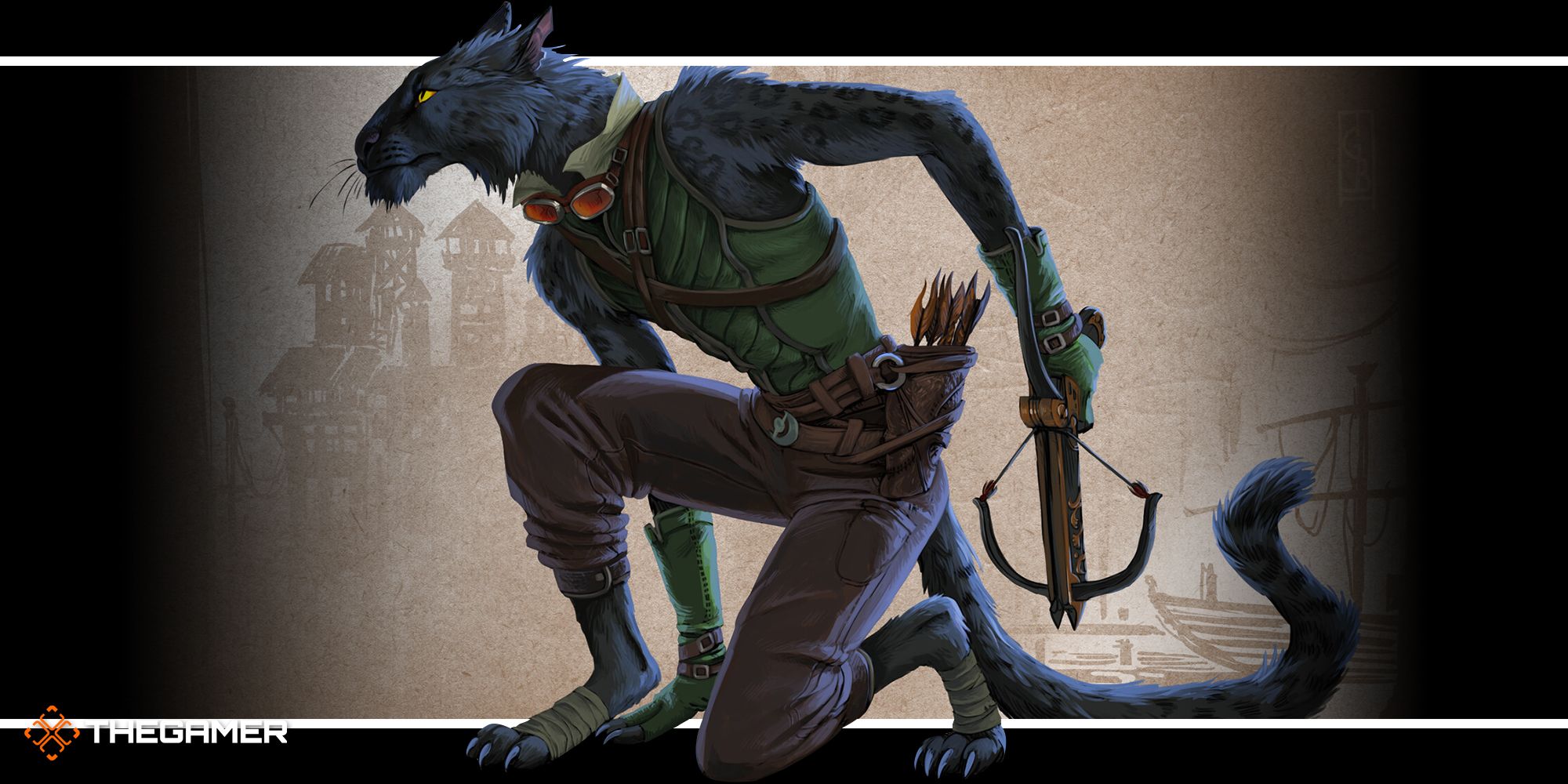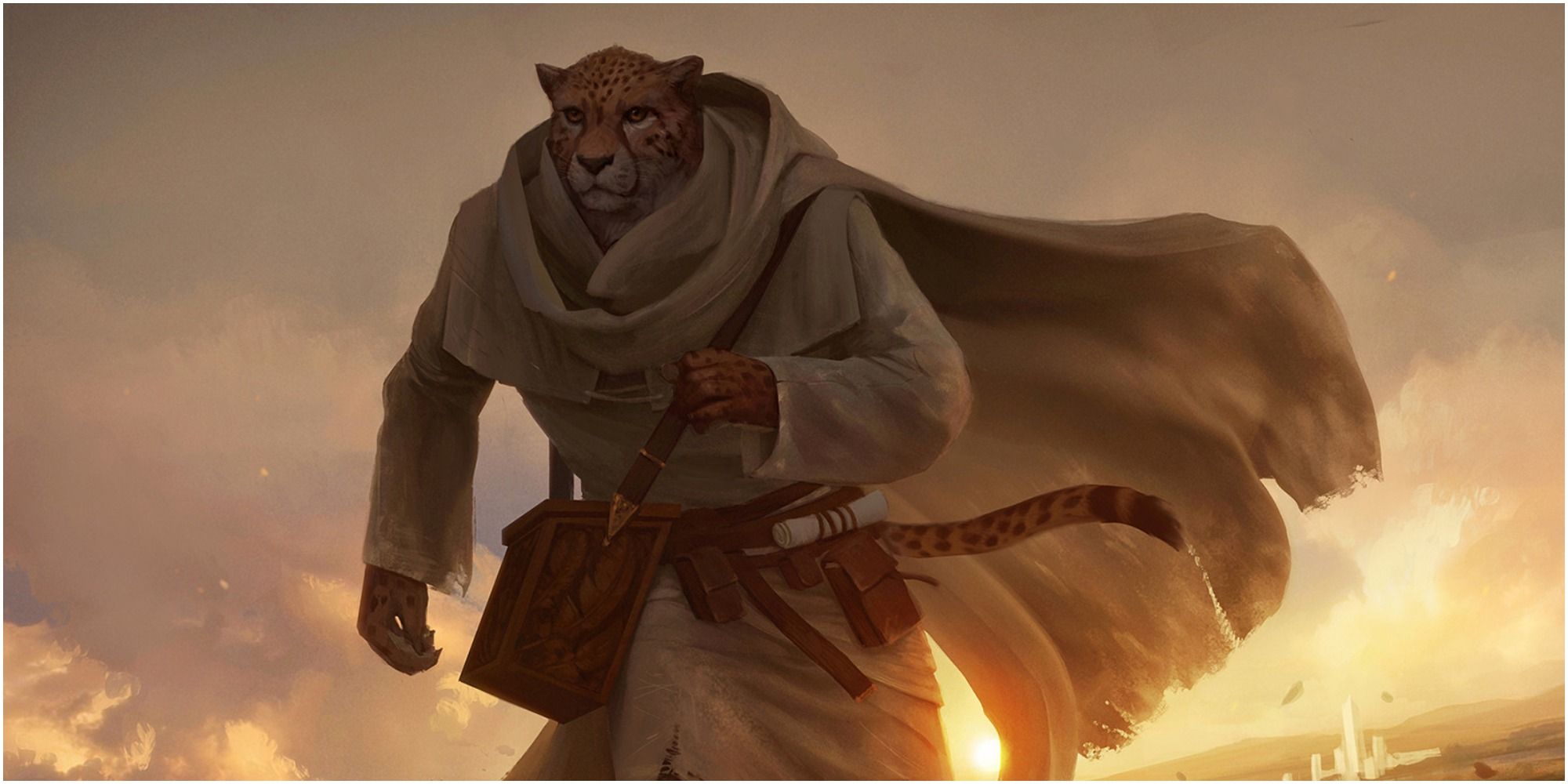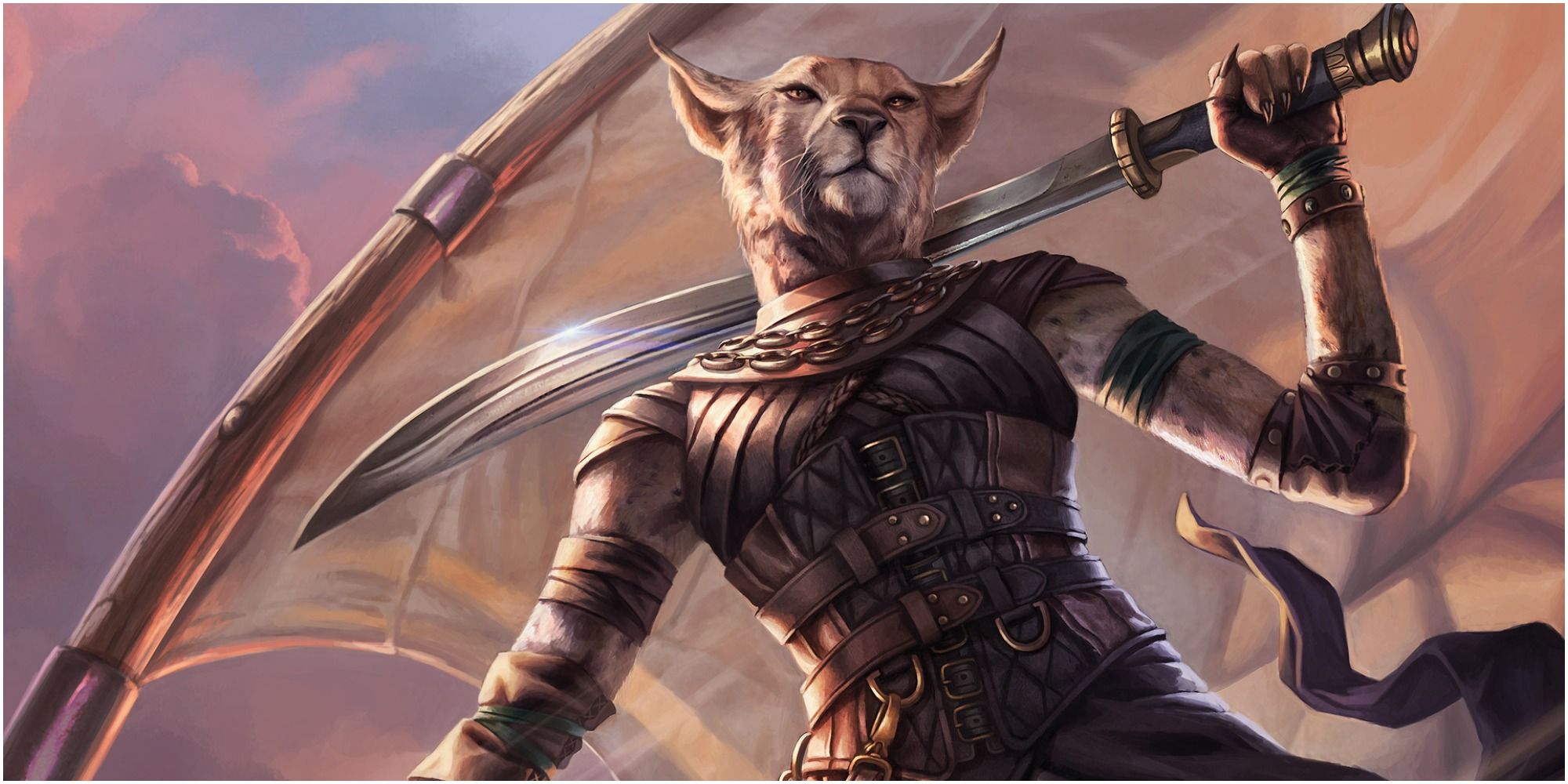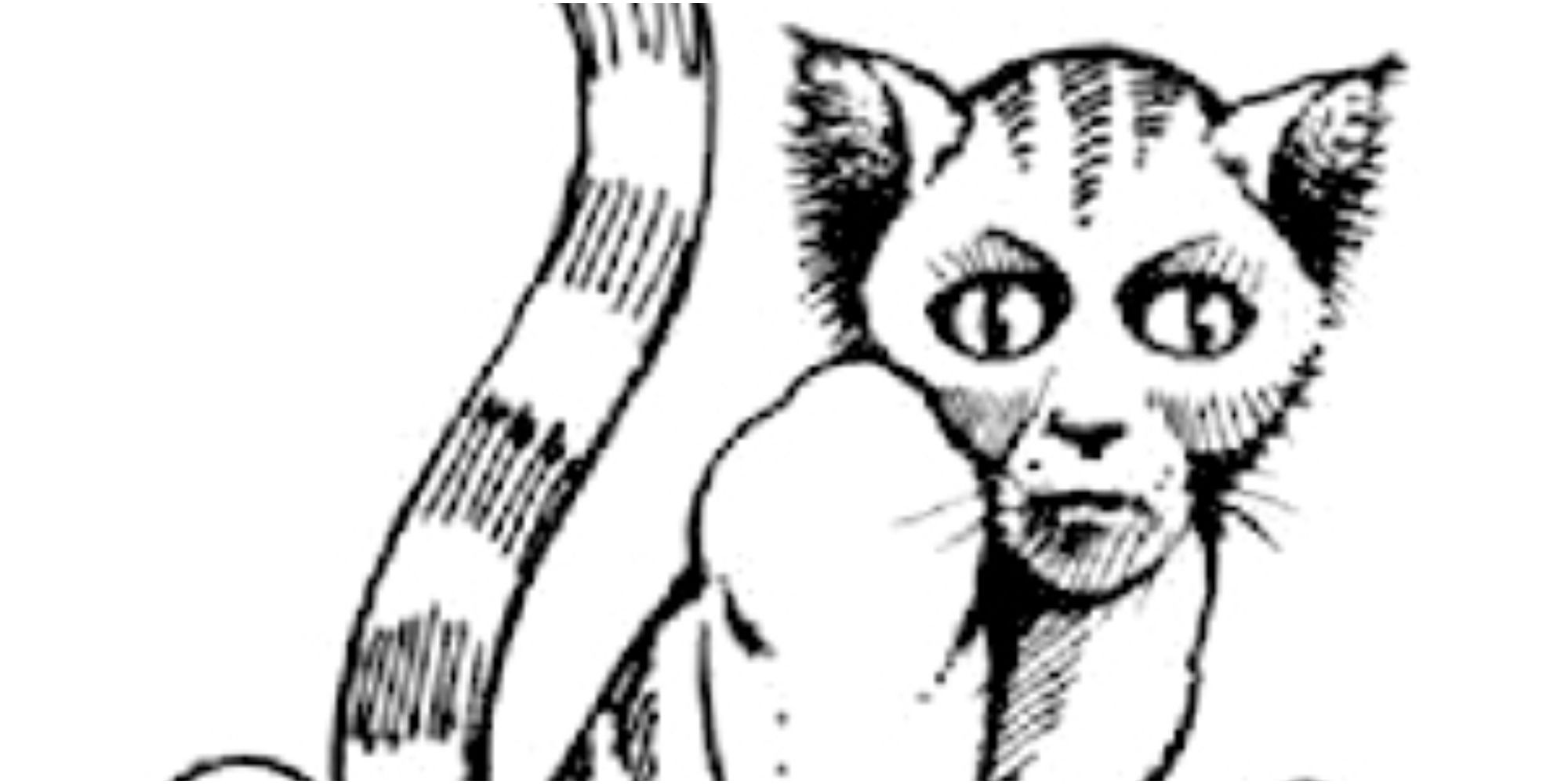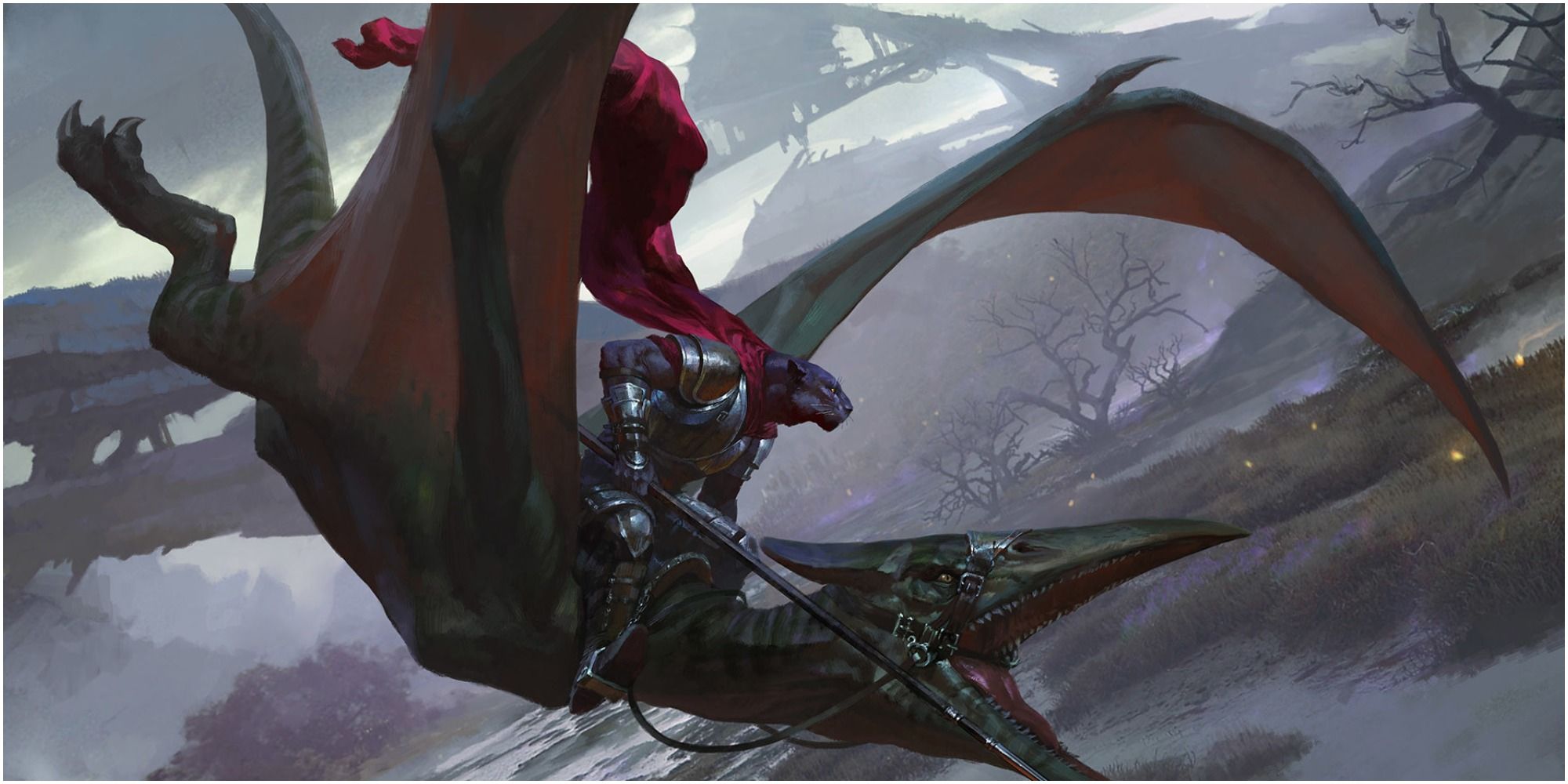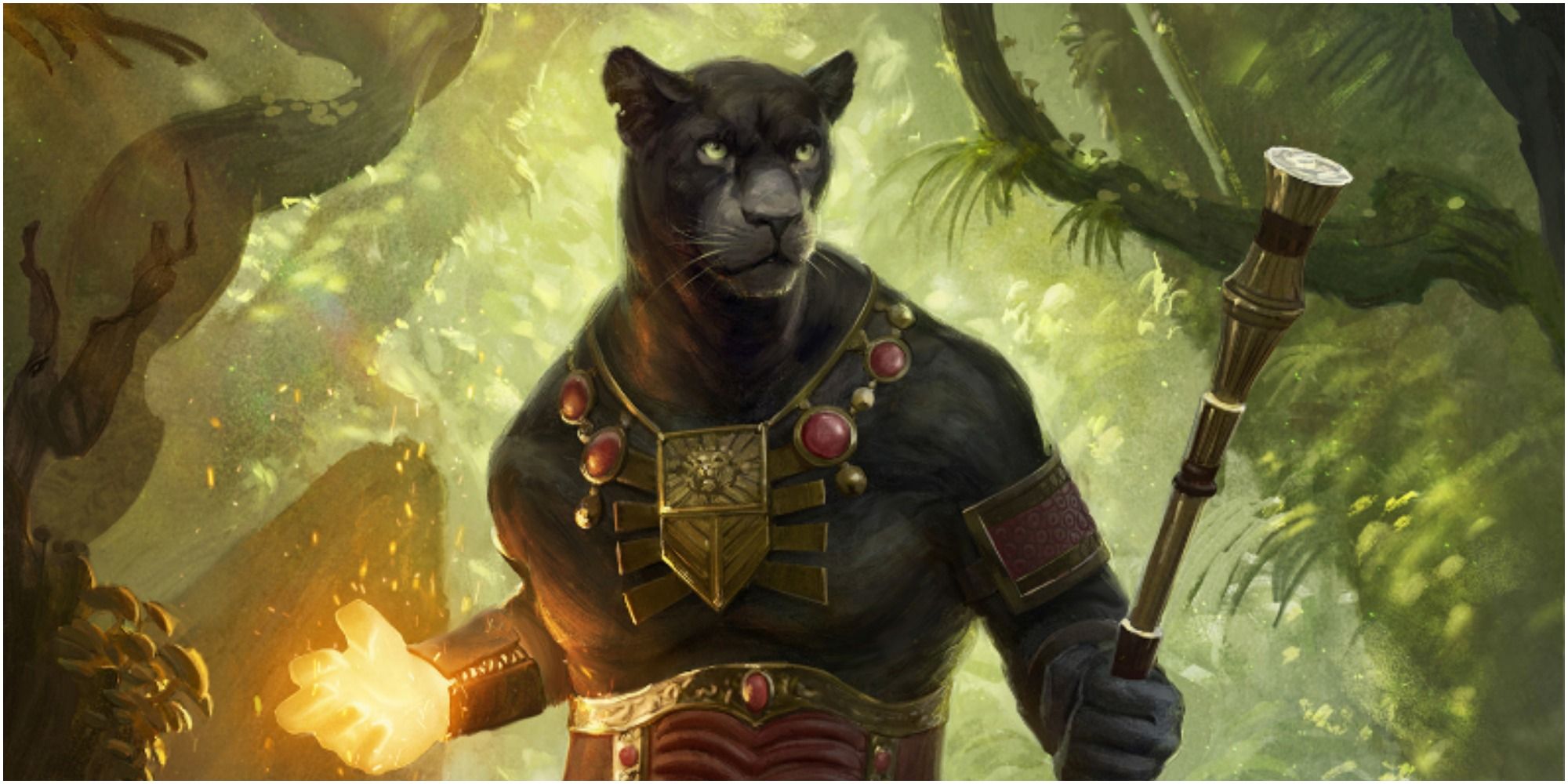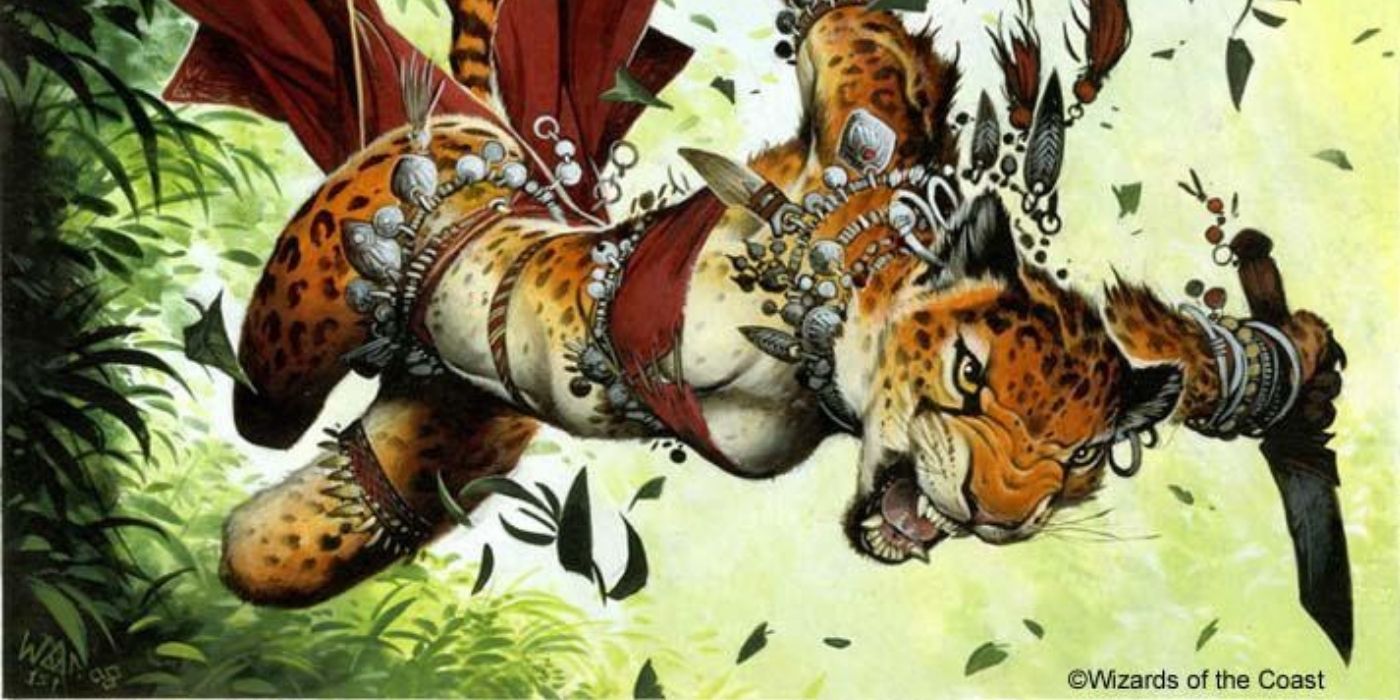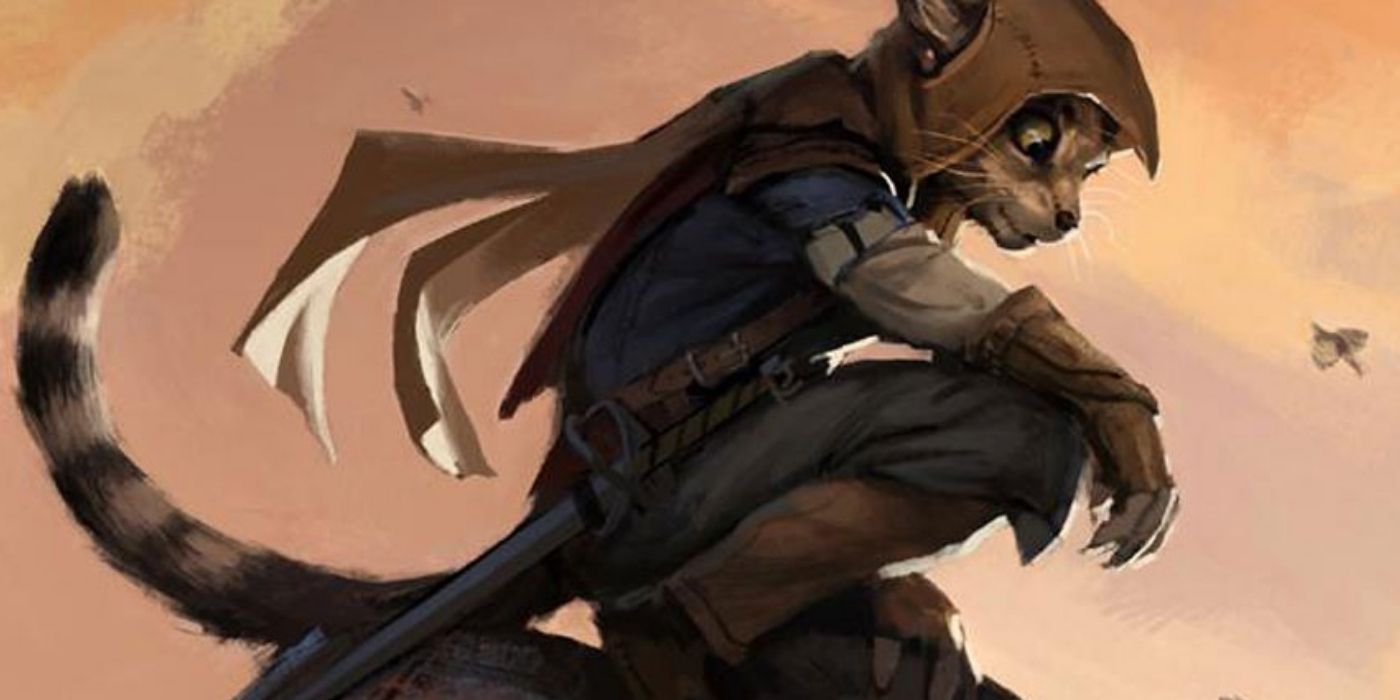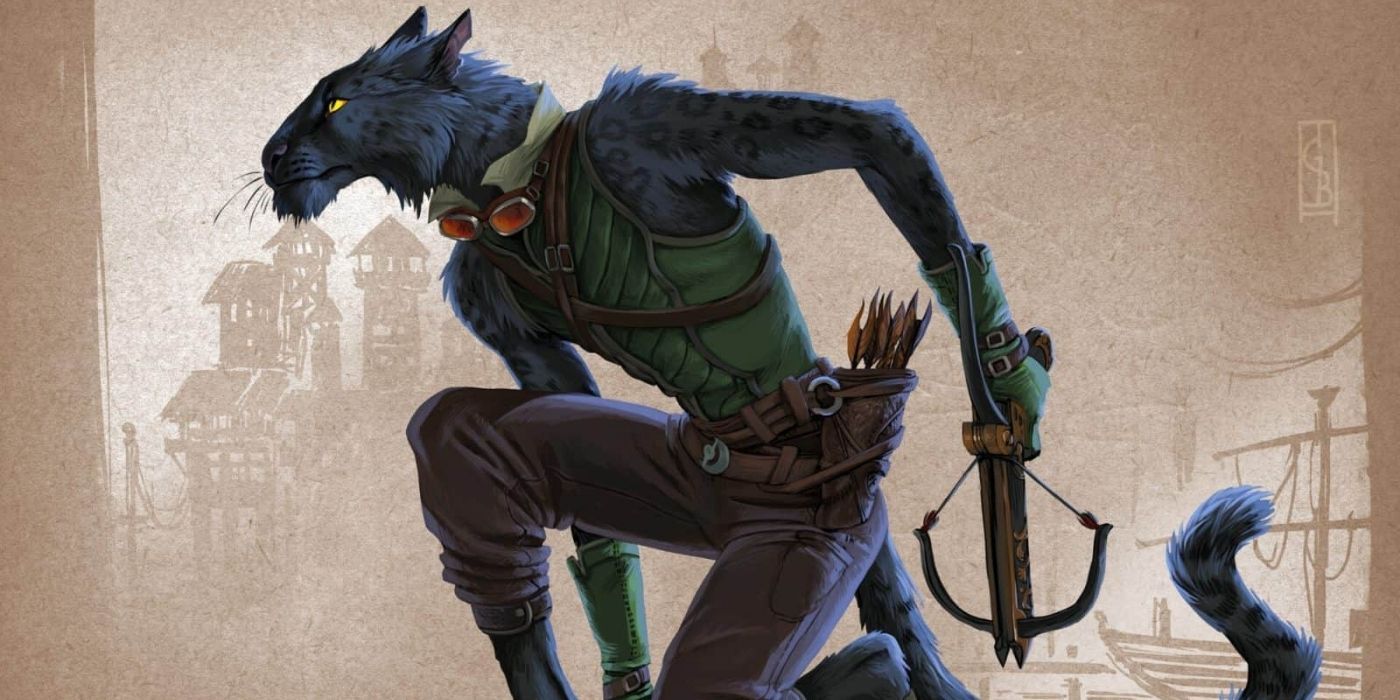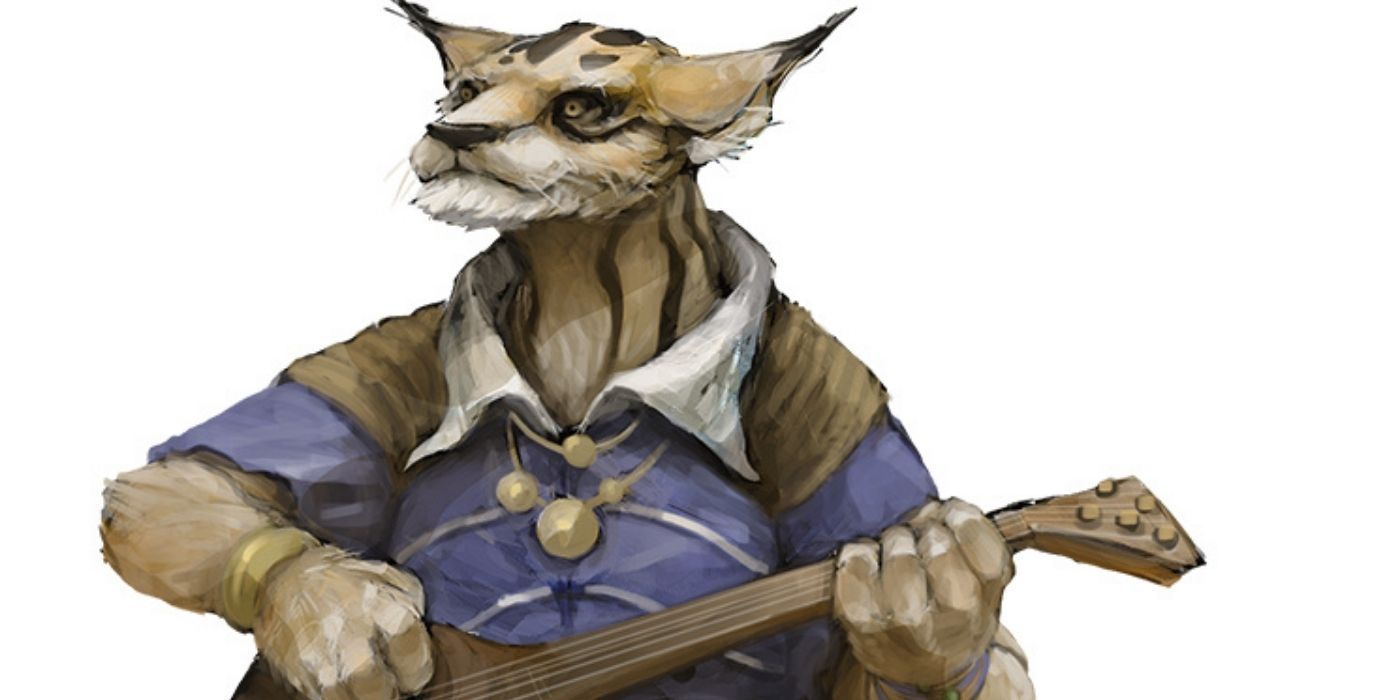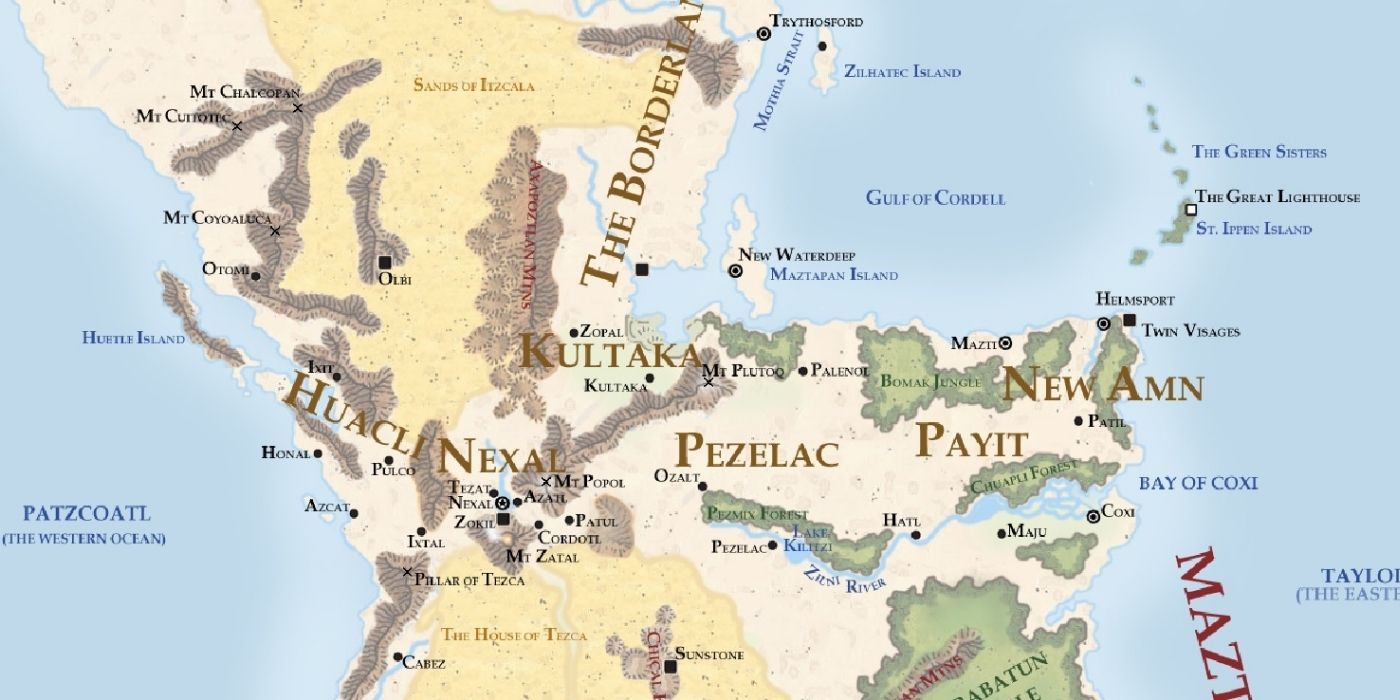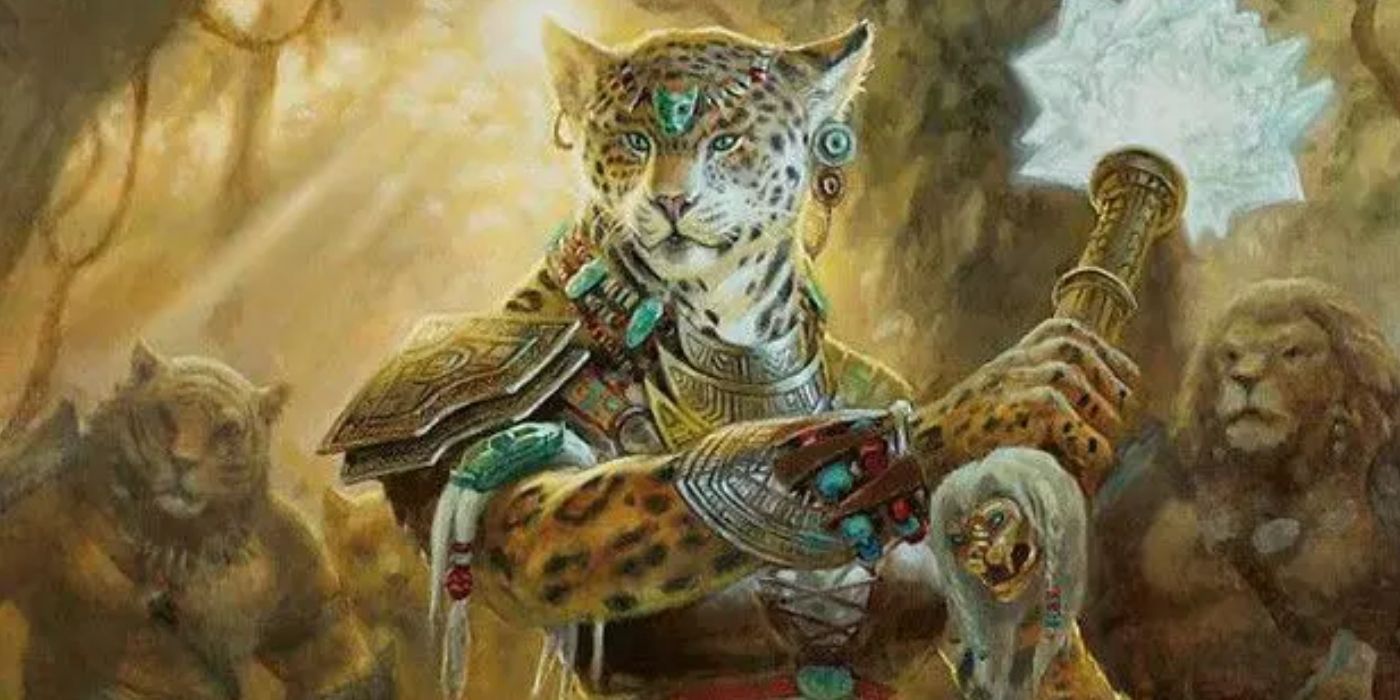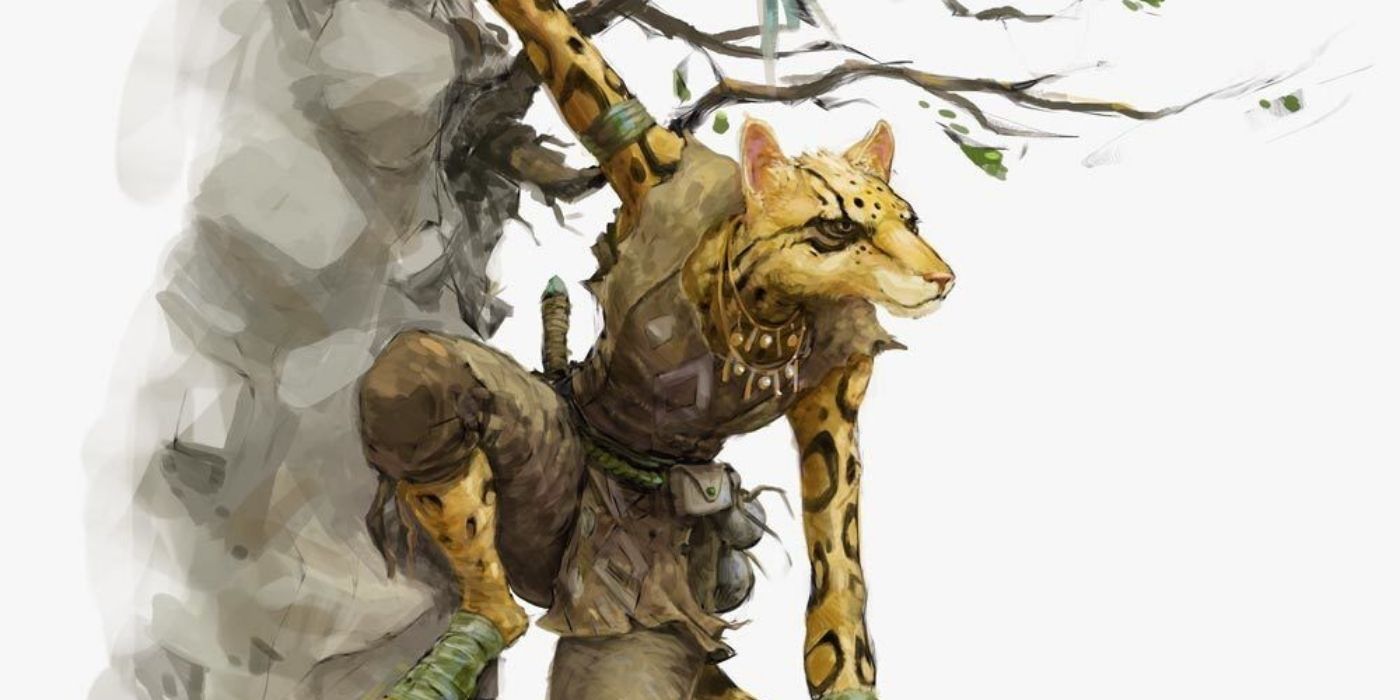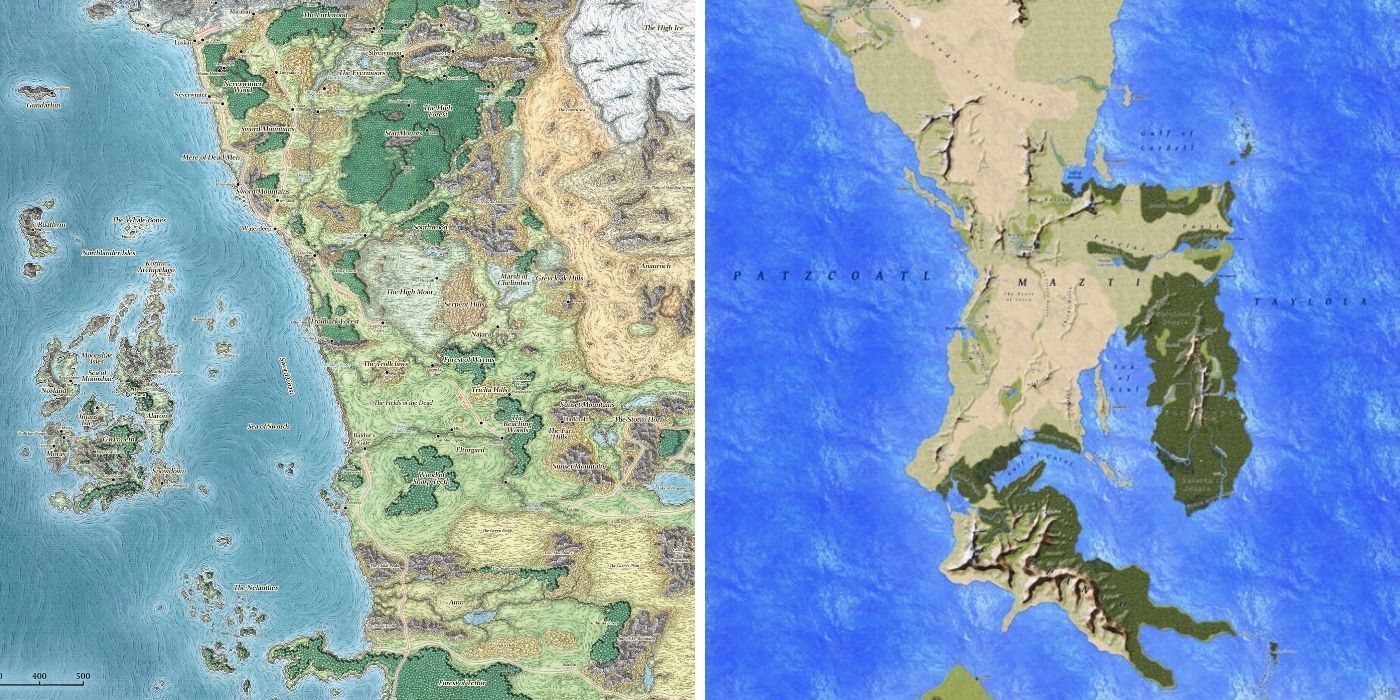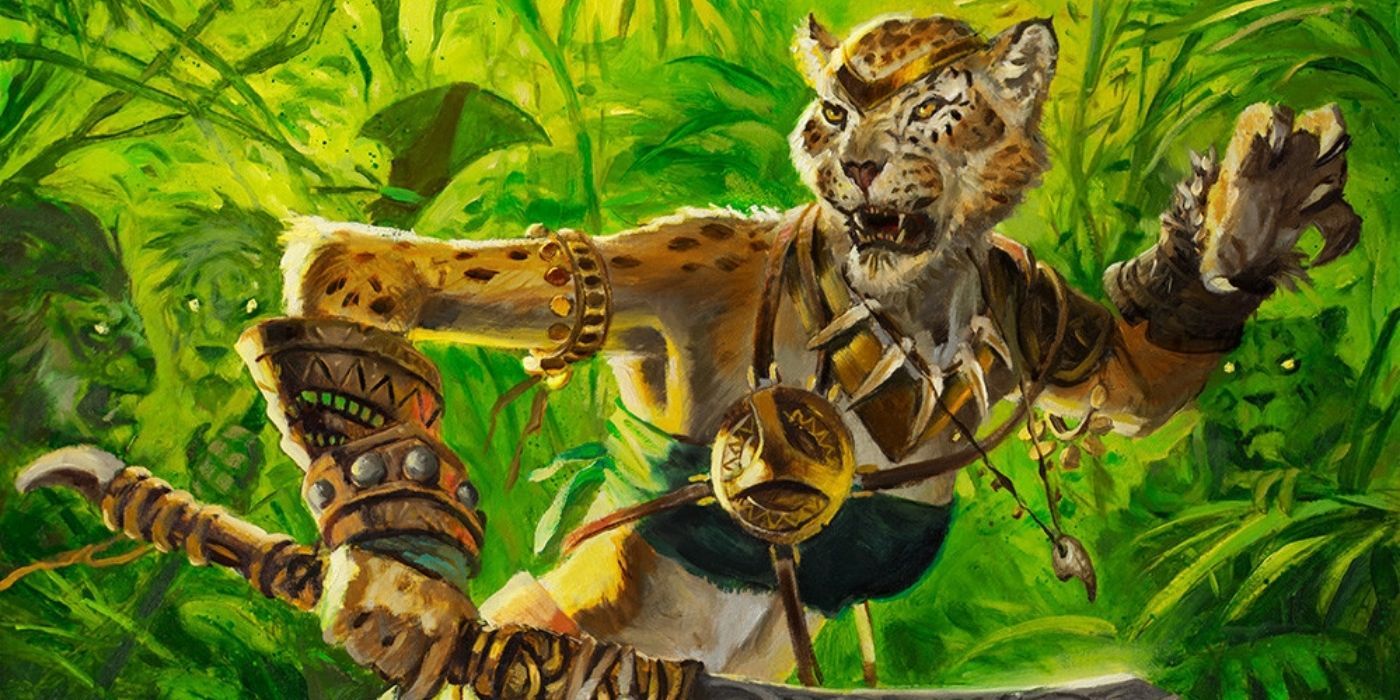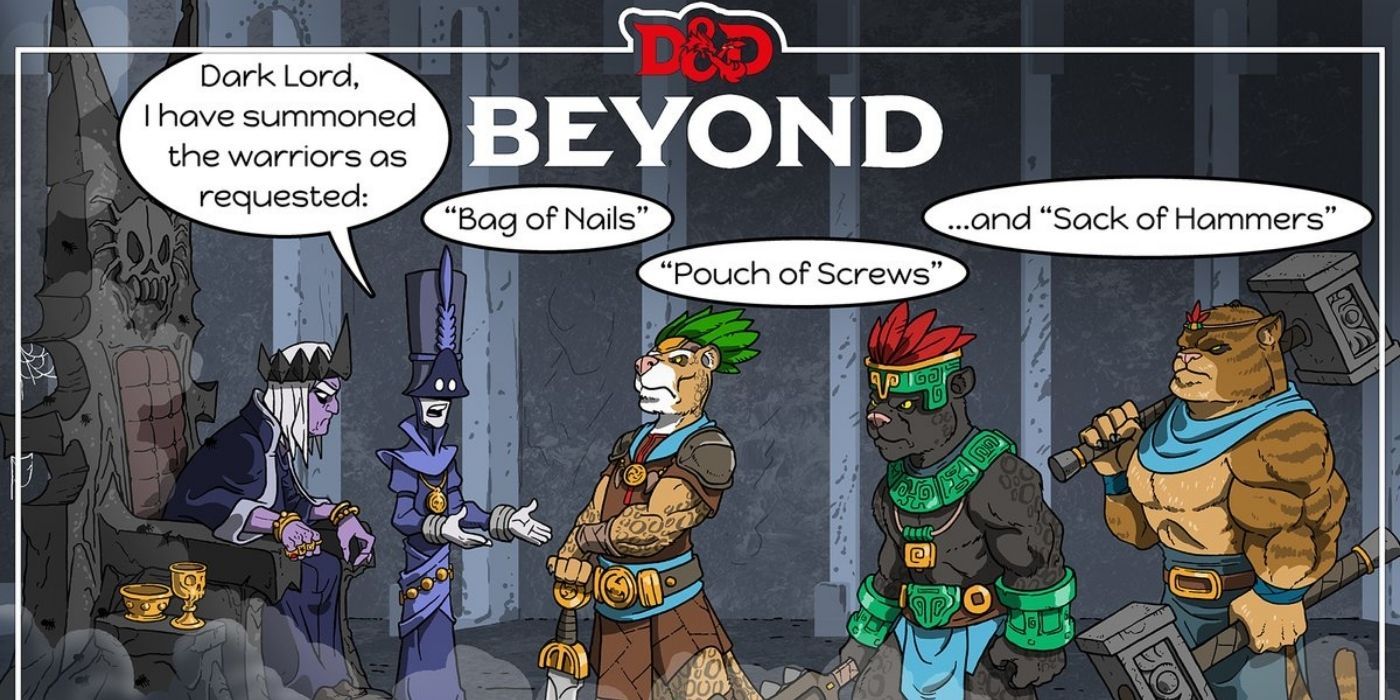The Tabaxi are a race of feline creatures that evolved to be humanoid and generally love to live in dense jungles. They're among Dungeons and Dragons' playable races, assuming they've purchased or have access to a copy of Volo's Guide To Monsters. They share characteristics with ordinary cats that humans are familiar with, including natural curiosity and a light foot.
Feline humanoid races have popped up in several fantasy games, novels, and movies over the years. Skyrim's Khajiit are one of the most well-known examples. The Tabaxi's lore has evolved and has been updated ever since they first appeared in 1981 as part of an extra sourcebook for the game's first edition. This detailed history is full of fascinating tidbits that fall between the cracks!
Updated by Paul DiSalvo on September 30, 2021: While Dungeons & Dragons is constantly evolving and gaining new playable races, Tabaxi in the game’s fifth edition has remained a popular choice, especially for those looking to play mobile characters. While they were initially introduced the the game as a monster in the early days of D&D, they have since become a fan favorite race that the game wouldn’t be the same without. While the race has grown in popularity over the years, there is still much about the Tabaxi that many players don't know. So today we're going to take a deep dive on Tabaxi and look at lesser-known details you may not have known!
15 They Are The Most Mobile Race In D&D
Mechanically, in D&D’s fifth edition, Tabaxi have the unique distinction of being the most mobile race in the game. This is due entirely in part to their unique feline agility ability which can allow a Tabaxi to double their speed until the end of a turn.
When paired with items like the Boots of Speed, the mobile feat, and classes like Monk and Barbarian that increase a character’s movement speed, Tabaxi’s can cover an absurd amount of ground in no time.
14 They Are Named After Phrases
While players are free to provide their characters with any names they see fit, Tabaxi traditionally utilize a unique naming convention that has each given Tabaxi named after descriptive phrases chosen by their clan.
While one Tabaxi may possess a name such as Wave of the Shore, another may have a name like Crescent Moon.
13 They've Been Around Since First Edition
Despite the fact that Tabaxi have only be playable in D&D’s fifth edition, they’ve actually been part of the game since the very beginning.
Making their first appearance in the Fiend Folio of 1st Edition, Tabaxi appeared as a race of humanoid cat-like species that were traditionally chaotic neutral and found within jungles.
12 They Excel In A Variety Of Classes
While some races in D&D’s 5th edition excel in certain roles, such as physical attackers or spellcasters, through their flexible abilities and combination of high dexterity and charisma, Tabaxi can excel in a wide variety of roles.
Thanks to its high mobility, a Tabaxi Paladin can easily enter melee combat or heal allies with Lay on Hands, while their combination of dexterity and charisma can make for a great face rogue. Additionally, Tabaxi can even make for great charisma casters or mobile characters like Barbarians and Monks as mentioned prior.
11 They Were Temporarily Replaced By Catfolk
As mentioned, Tabaxi have been part of D&D since the game’s very first addition. Despite this, the first playable feline race wasn't the Tabaxi, rather, it was the catfolk that were introduced in Races of the Wild of D&D 3.5 edition.
Catfolk distinctly tote completely different abilities than Tabaxi and have various lore differences as well, and haven’t been seen again since the edition in which they were introduced.
10 They Have Different Names, Depending On Who You Ask
Tabaxi have been called by multiple names as they were discovered for the first time by different groups. People who met Tabaxi with solid spots used to refer to the species as "leopard men." People who met Tabaxi that had rosette spots called the species "jaguar men."
These two groups, when learning the common tongue, even pronounced their racial name, "Tabaxi," differently. Though their old names are heard in passing from time to time, most people are familiar with the race by now enough to use the label "Tabaxi."
9 Tabaxi Mask Their Scent With Herbs
Tabaxi are reclusive by nature, so they have developed techniques to stay out-of-the-way and unnoticed; this makes them an excellent sneaky addition to any party.
Over the generations, they have passed down detailed knowledge of the flora in their jungles that can be used for food, poisons, healing potions or salves, and even the particularly pungent plants that would mask their smell from adversaries. When other intelligent races started to come into contact with Tabaxi tribes, the felines became known as masters of the surprise attack.
8 They Can Make Weapons But Prefer Their Own Claws Or Teeth
Many Tabaxi prefer to attack with their own claws and teeth than a handmade weapon. Some interpreted this to mean that Tabaxi were not intelligent enough to create any weapons, or at least the more advanced ones, but this was a dangerous misgiving.
Tabaxi generally prefer to make weapons out of wood, their most abundant resource: bolas, slings, javelins, and macas are among the most common. Underestimating a Tabaxi clan led to a slaughter since they were actually advanced tacticians, comfortable in a challenging and dense jungle environment.
7 They Consider Trade Demeaning
Tabaxi form clans to live in, which move nomadically around their jungles (their constant movement is thought to be part of the feline instincts they have retained). Unlike other races, they do not engage with their other clans at all unless absolutely necessary and do not trade with one another.
Indeed, Tabaxi actually view trade as a demeaning process. Only in dire circumstances is it known that a Tabaxi clan would engage in trade — and even then, they send third parties to do it on their behalf.
6 Tabaxi Language Is Just Ancient Payit
The Tabaxi have their own unique language. However, it is clearly derived from an ancient version of the Payit language (Payit is a nation north of the jungles where the Tabaxi originated).
People who spoke Payit have said that they can understand about half of what the Tabaxi are saying in their native language. This Tabaxi language is also entirely different than the Tabaxi language spoken by a tribe living on the island of Chult, though the two are not distinguished by separate names.
5 They Were Created By The Cat Lord
The Tabaxi believe that their creator is a god named the "Cat Lord" (though he was known by other names as well). The Cat Lord is believed to have created all feline animals, actually, and to be truly Neutral — he only cares about "cat-things," not what is right or wrong, good or bad.
He, like all felines, roams the world — but the Cat Lord can roam every plane. It is said that he can sometimes be spotted on the material plane. He has three major forms; a black cat or panther, a pale human man, or a combination of the two, with human and cat characteristics combined.
4 Their Pelts Were Highly Valuable
When they were discovered by other races, Tabaxi went on to be hunted for their pelts, a cruel practice that still continues in some black markets. Their pelts were worth a hefty sum, even up to 50 gold pieces each.
Magicians began to purchase them when they realized that they could be used to enhance their strength. As avid and agile hunters, Tabaxi put up a good fight, but greed made their opponents crafty; not everyone could survive the ensuing captures.
3 They Were Brought To Faerûn Via The Slave Trade
On top of killing them for their pelts, outsiders also took Tabaxi as slaves. Young Tabaxi that couldn't protect themselves as easily were often captured; they could be sold for about 225 gold pieces each, making them even more valuable than the pelts.
This horrible practice was, unfortunately, how the Tabaxi race spread at first through the material plane, to the continent of Faerûn, and then beyond. Tabaxi who managed to escape their captors but couldn't return home overseas developed a clan in Chult, an area covered in jungle that became an island during the Spellplague (and returned to the mainland when it was resolved).
2 Tabaxi Seldom Attack Without Cause
Tabaxi, more than any other race, are often on the neutral scale of alignment (this is often attributed to their feline heritage). They truly do not wish to disturb or be disturbed.
Indeed, many of them are drawn to quiet places and ancient ruins, where they can uncover secrets from long ago through careful examination. Their clans do not engage in war with one another unless provoked, and any wars that did occur were generally short-lived due to the race's excellent tactical skills and ability to focus.
1 Clans Often Owe Allegiance To A Jaguar Lord
Jaguar Lords weren't exactly Tabaxi, but don't really have a race to themselves — they only appear officially in the second edition of Dungeons and Dragons. It's detailed that they live solitary lives in the jungles.
Jaguar Lords were always male, and when they mated with a Tabaxi female the child was always another Jaguar Lord. Though they often lived happily alone, some took control of Tabaxi clans. The Jaguar Lords occasionally operated as priests to one of their gods, or performed hishna magic.

